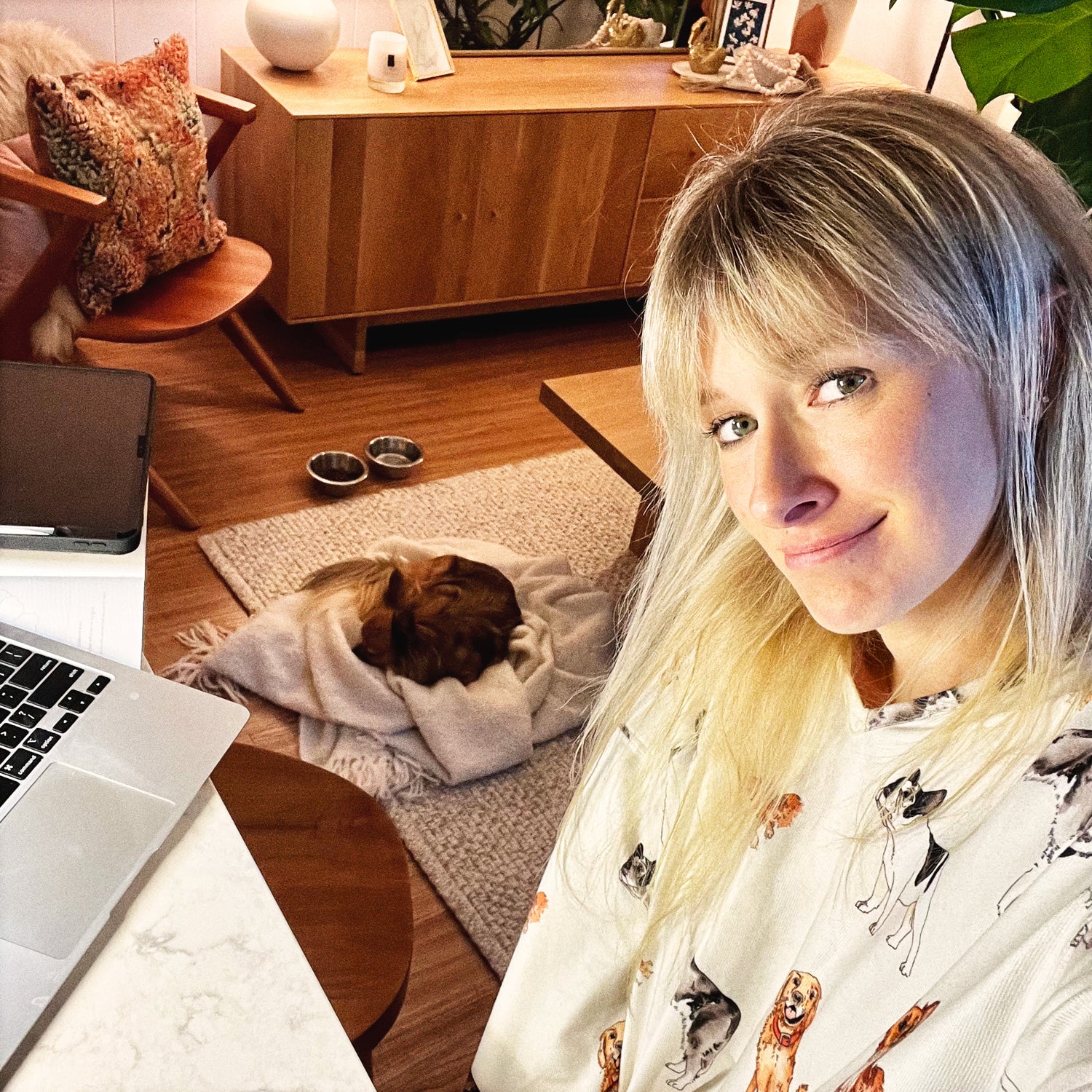Deciding to create less waste begins as a mindset shift. To look around at your home and everyday purchases. Then consider how they might affect the environment, our homes, and our health.
From swapping out single-use plastics for long-lasting, compostable, and consciously-made alternatives. To consider ditching paper towels and DIY projects. The below list can help you feel inspired instead of intimidated to create less waste.
1.Shop locally and from earth-conscious brands
When possible, buy local. This eliminates the need for packaging and reduces your carbon footprint. If online shopping is the only option, support conscious brands. If a brand is earth conscious, their values will trickle into everything they do including the shipping materials they use. We live in a world becoming more and more aware of our footprint. Shipping materials are becoming more green—look for brands using compostable and cardboard.
2.Start a compost
Composting is a great way to reduce waste—especially food waste. When cooking, set aside any food scraps to go into the compost. It's rewarding to see how much waste is saved when collecting scraps to give back to the earth. As an added recycling bonus, cardboard can be added to your compost pile. For those new to composting, use this guide to get started.
3.Repair old clothing
According to earth.org, 11.3 million tons of textile waste ends up in the landfill every year—and that’s just in America. Before throwing away a piece of clothing, consider if it can be repaired. Is there a way to turn it into something new? Sowing may sound intimidating, however there are tons of resources for learning online. Purchase a repair sewing kit to have on hand for quick clothing repairs. Move slowly and with intention when considering the life of your clothing.
4.Swap for reusable
Look around at the things you use everyday and consider what could be swapped for reusable. A couple examples include: paper towels, baggies, and containers. Once you make the switch it becomes second nature to reuse instead of throwing something away. Use this article for more reusable swaps.
5.Up-cycle clothing and fabrics
When deciding to up-cycle, you choose to give something that’s no longer usable, new life. The intention is to keep fabrics and clothing out of the landfill. This can look like taking a pair of old socks and making them into a toy for your dog. Another idea is naturally dye an old t-shirt.
People of Leisure launched their Ucycle collection with this idea in mind. Shop the collection here.
6.Refill the pantry and bathroom
Many of the essentials we use everyday are not reusable. Think: toothpaste, floss, cleaning supplies. Luckily there are innovative brands making it easy to refill instead of throwing away. The brand Package Free Shop is a one-stop-shop for all things refillable.
7.Go plastic free
This is easier said than done when so much of our products are made from plastic or inside of plastic. A great place to start is when grocery shopping. If there’s a plastic free option for a product you’re buying, opt for that instead. Notice the everyday essentials you use in your home: reuse any plastic or opt for glass instead.
8.Make it yourself
The world of DIY is vast. Consider making your own hand lotion, soaps, sauces or anything else that could be made again. Instead of buying a single-us container. Use this DIY Essentials Guide for everyday essentials to make.
From swapping out single-use plastics for long-lasting, compostable, and consciously-made alternatives. To consider ditching paper towels and DIY projects. The below list can help you feel inspired instead of intimidated to create less waste.
1.Shop locally and from earth-conscious brands
When possible, buy local. This eliminates the need for packaging and reduces your carbon footprint. If online shopping is the only option, support conscious brands. If a brand is earth conscious, their values will trickle into everything they do including the shipping materials they use. We live in a world becoming more and more aware of our footprint. Shipping materials are becoming more green—look for brands using compostable and cardboard.
2.Start a compost
Composting is a great way to reduce waste—especially food waste. When cooking, set aside any food scraps to go into the compost. It's rewarding to see how much waste is saved when collecting scraps to give back to the earth. As an added recycling bonus, cardboard can be added to your compost pile. For those new to composting, use this guide to get started.
3.Repair old clothing
According to earth.org, 11.3 million tons of textile waste ends up in the landfill every year—and that’s just in America. Before throwing away a piece of clothing, consider if it can be repaired. Is there a way to turn it into something new? Sowing may sound intimidating, however there are tons of resources for learning online. Purchase a repair sewing kit to have on hand for quick clothing repairs. Move slowly and with intention when considering the life of your clothing.
4.Swap for reusable
Look around at the things you use everyday and consider what could be swapped for reusable. A couple examples include: paper towels, baggies, and containers. Once you make the switch it becomes second nature to reuse instead of throwing something away. Use this article for more reusable swaps.
5.Up-cycle clothing and fabrics
When deciding to up-cycle, you choose to give something that’s no longer usable, new life. The intention is to keep fabrics and clothing out of the landfill. This can look like taking a pair of old socks and making them into a toy for your dog. Another idea is naturally dye an old t-shirt.
People of Leisure launched their Ucycle collection with this idea in mind. Shop the collection here.
6.Refill the pantry and bathroom
Many of the essentials we use everyday are not reusable. Think: toothpaste, floss, cleaning supplies. Luckily there are innovative brands making it easy to refill instead of throwing away. The brand Package Free Shop is a one-stop-shop for all things refillable.
7.Go plastic free
This is easier said than done when so much of our products are made from plastic or inside of plastic. A great place to start is when grocery shopping. If there’s a plastic free option for a product you’re buying, opt for that instead. Notice the everyday essentials you use in your home: reuse any plastic or opt for glass instead.
8.Make it yourself
The world of DIY is vast. Consider making your own hand lotion, soaps, sauces or anything else that could be made again. Instead of buying a single-us container. Use this DIY Essentials Guide for everyday essentials to make.






